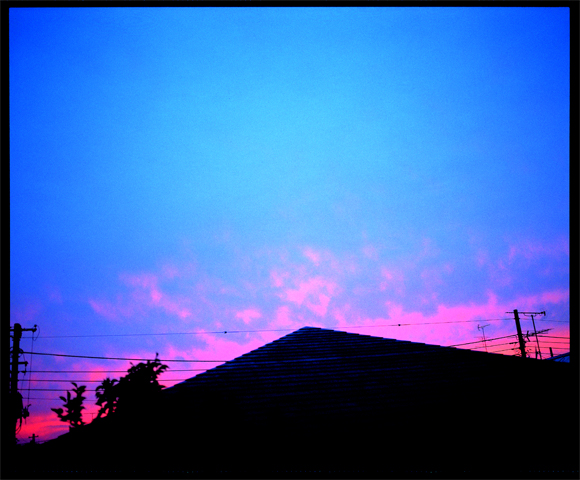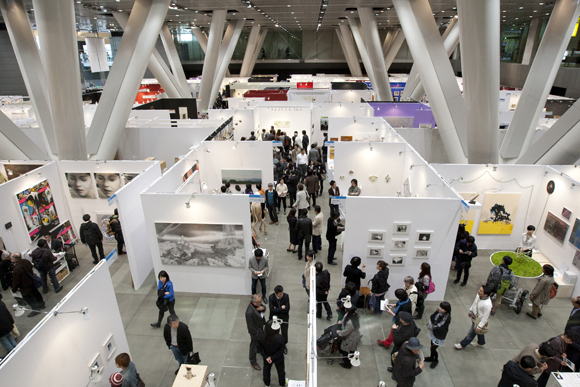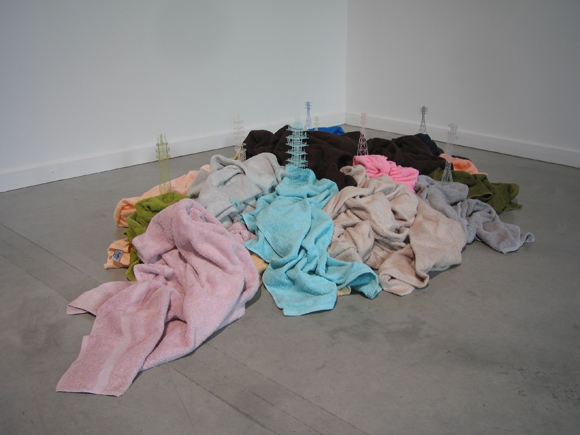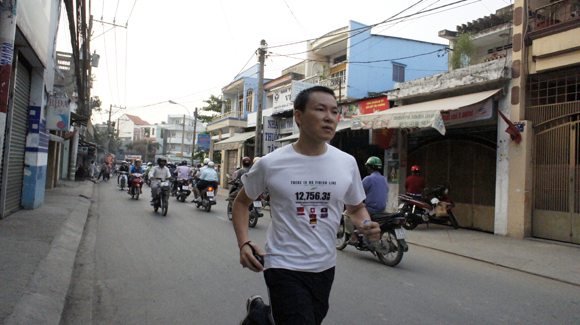Contemporary art in Japan – new challenges in the land of the rising sun
M-KOS sends sincere commiserations to all the people affected by the 2011 Great East Japan Earthquake.

Nobuyoshi Araki “Koki No Shashin (Photographs of A Seventy Year Old)” (2010) Courtesy of Taka Ishii Gallery via Yokohama Triennale website
Almost five months have passed since the Great East Japan Earthquake devastated the northern east coast of Japan. Still in the midst of recovery, the country is fraying with an unprecedented nuclear crisis as well as support infrastructures towards people and business affected in the disaster.
Japanese people are well known for demonstrating a strong solidarity in times of need, and the sphere of contemporary art has contributed in this relief effort. Numerous art galleries and museums organised charity auctions*, artists initiated special projects in support of refugee communities, and countless other initiatives have been recorded. Japan’s current social condition is in everyone’s mind and, needless to say, contemporary art is facing new challenges in the land of the rising sun.
Art Fair Tokyo and the Yokohama Triennale are both opening this summer, two major art events that have seen big changes since the earthquake, having had to reflect and evolve in the context of their particular social landscape.

View from Art Fair Tokyo 2010 Photo by Munetoshi Iwashita. Courtesy of ART FAIR TOKYO
For example, Art Fair Tokyo was postponed from its original show schedule in April because its planned venue (Tokyo International Forum) was used as a refugees shelter. The Fair is now rescheduled to 29–31 July, with changes in the line-up of participating galleries including many cancellations from overseas. One of the related events “Dialogues in Art†is hosting two separate talks focusing on the role of art for Japan’s new and challenging situation (1.Thinking about art in the aftermath of the earthquake / 2.How art has worked and will work for the quake-affected area). Other charity events such as “Art Fan!†and “Art Prints†are being organised, the proceed of which will be donated to the Japanese Red Cross.

Takahiro Iwasaki “Out of Disorder (Complex)” (2009) Courtesy of the artist and ARATANIURANO via Yokohama Triennale website
The fourth edition of Yokohama Triennale will be held from 6th August to 6th November at Yokohama Museum of Art and BankArt Studio NYK. Palais de Tokyo chief curator in Paris, Akiko Miki was appointed as this year’s Triennale art director. The exhibition entitled “Our Magic Hour – How Much of the World Can We Know†aims to focus on works of art inspired by the mysteries of the world in our everyday lives. Magic-like powers, supernatural phenomena, mythological legends and animism all are examined in “Our Magic Hour†where possibilities emerge from the “inexplicable†which requires open-mindedness, flexibility and imagination. Faith in such positive outcomes presents a key to finding a way out from an uncertain future. The Triennale includes just over 60 contemporary artists, along with works by Max Ernst, René Magritte and Méret Oppenheim, from Yokohama Museum’s collection. According to their press release, some artists have even changed their original plans and are now creating new works that reflect Japan’s situation.

Jun Nguyen-Hatsushiba “Breathing is Free 12,765.3: JAPAN, Hopes & Recovery, 1789km” (2011) Photo: Nguyen Tuan Dat / Nguyen Ton Hung Truong. Courtesy the artist and Mizuma Art Gallery via Yokohama Triennale website
Japanese-American-Vietnamese artist Jun Nguyen-Hatsushiba produced such a work. “Breathing is Free 12,765.3: JAPAN, Hopes & Recovery, 1789km†is a virtual earth drawing project, dedicated to the refugee crisis in Japan. Nguyen-Hatsushiba and other like-minded volunteers have been, for the past 18 weeks, feverishly running to draw cherry blossoms by using GPS-satellite technology, in Ho Chi Minh City as well as other cities and towns in Japan, to present this in time for the Triennale. A dedicated Facebook page was also set up to find out about this project from international viewers.
According to the 2010 Wolrdwide Survey of Museum Attendance, Japan simultaneously ranked the first, second, fourth and fifth places on the list. Although these audience figures were given for exhibitions of old masters (Tohaku Hasegawa and Impressionist paintings) they still attest for Japan’s huge interest in art. In the past five months, many activities were organized by contemporary artists, galleries and museums, drawing large attendance all over the country. Japanese people’s experience has changed from passive viewers to active participants, to make contemporary art more accessible, as well as to change our perception of this activity. Perhaps many now have gained some kind of faith in the power art can change the world.
In coming weeks M-KOS will feature a series of articles covering some of the more striking contemporary art in Japan, including an upcoming text by Hana Sakuma, artist and writer based in Kobe, Japan.
* Many charity art auctions for Japan have been organized not only in Japan but also in other countries.
